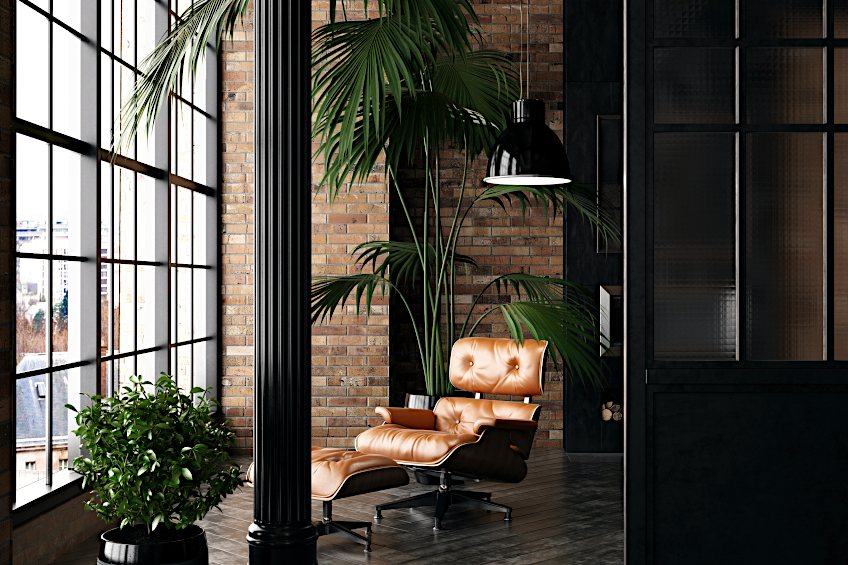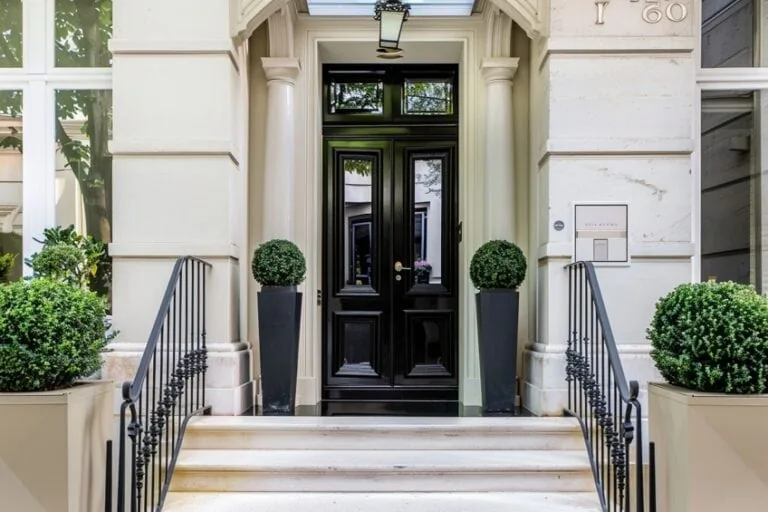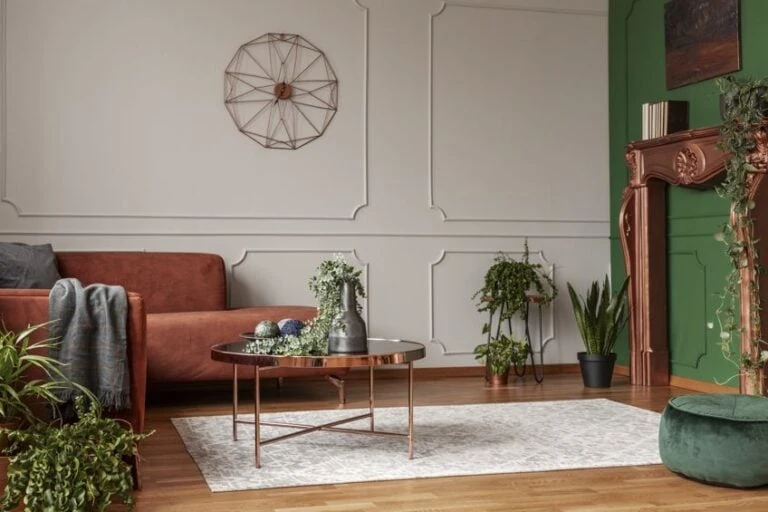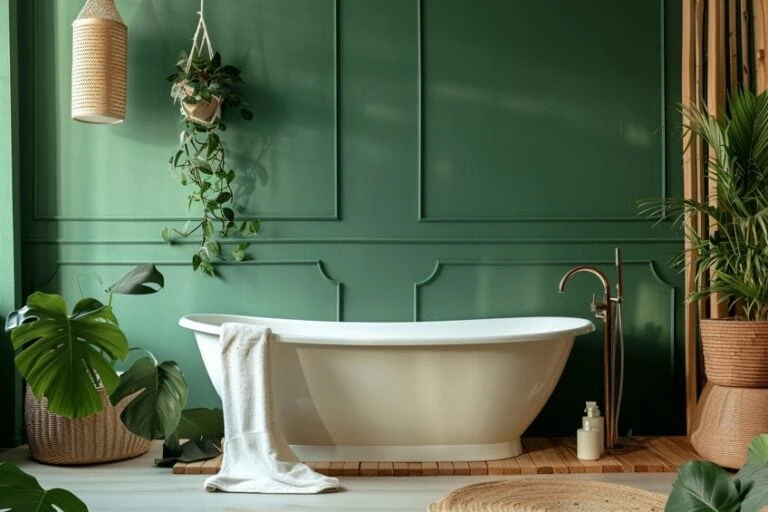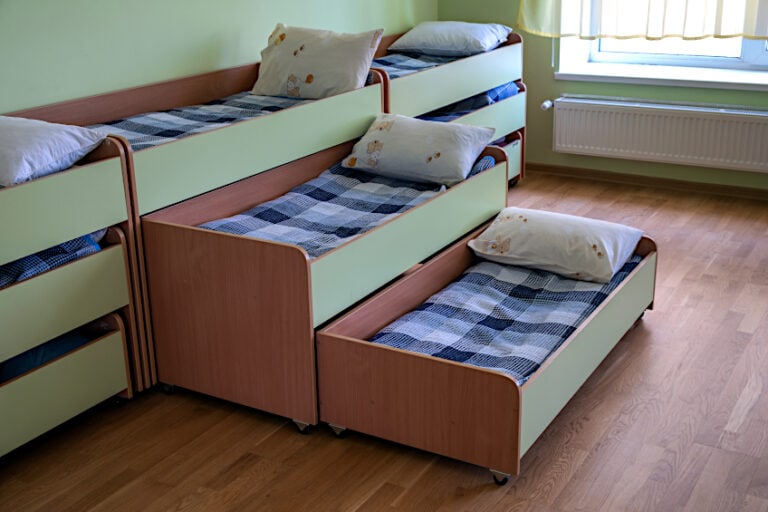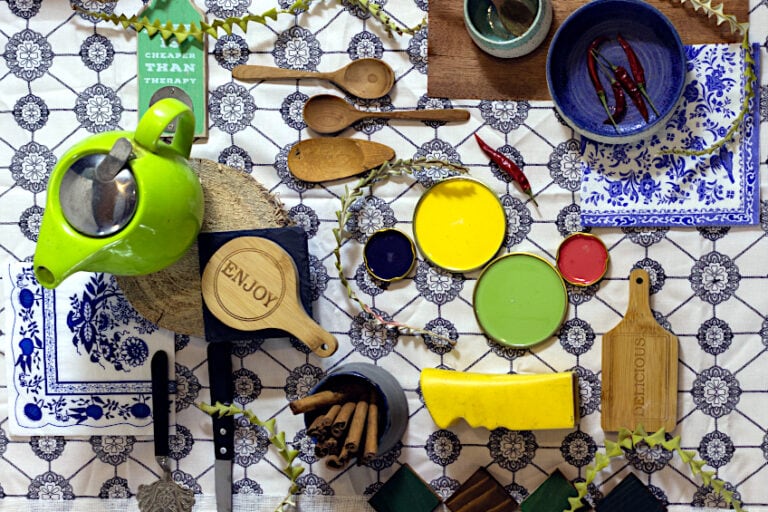Industrial Interior Design – The Hallmarks of Industrial Style
This post may contain affiliate links. We may earn a small commission from purchases made through them, at no additional cost to you.
Industrial interior design has taken on many different meanings over the years. At one point it was a design style that existed out of necessity, whereas now it is simply a style choice that some prefer to other styles. Love it or hate it, industrial design is here to stay. There are many ways to incorporate this versatile design style with other contemporary designs to make a space unique, and surprisingly cozy.
What Is Industrial Interior Design?
Industrial interior design was inspired by factories from the Industrial Revolution. Industrial house design is all about displaying that which is usually hidden: electrical services, plumbing pipes, and ducts exposing raw and unfinished materials. Industrial interior designs prioritize function above style in the most aesthetically pleasing way possible.
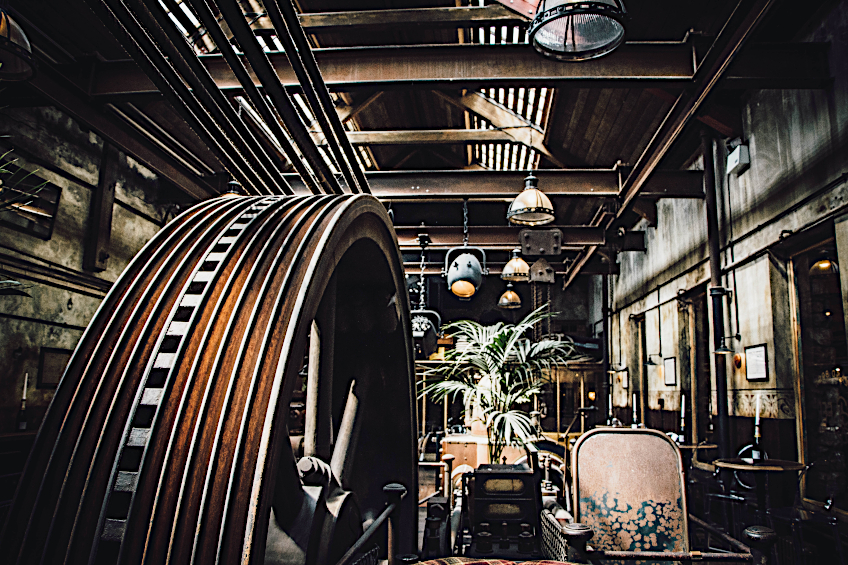
Over the years, industrial interior design has become associated with more of a masculine type of design style. Industrial interior design can come forth as very hard and unforgiving, but designers have started combining the style with softer and more feminine characteristics that make it a style suitable for truly anyone. Industrial interior design is a fuss-free, lived-in style that embraces raw materials and celebrates the beauty of simplicity.
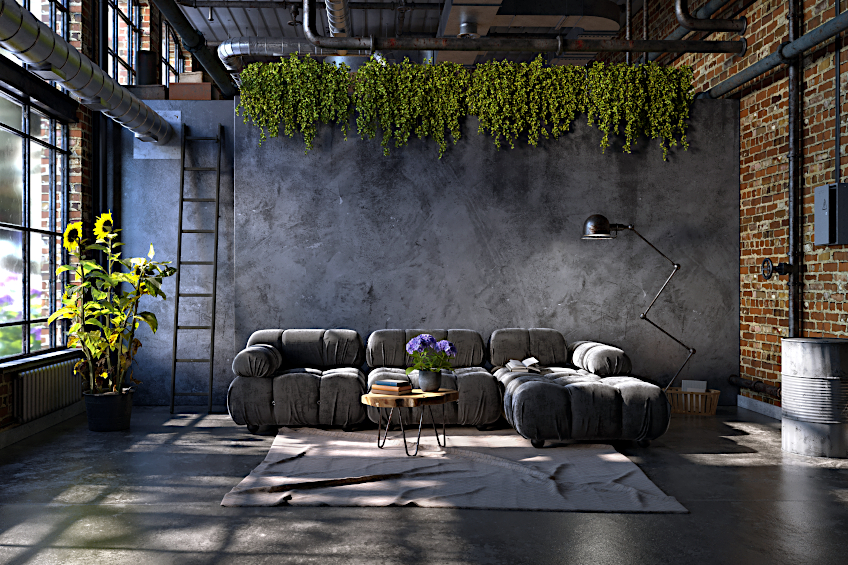
Industrial interior design has also become very much associated with sustainable design, as its core principles are to use reclaimed things and existing building materials with no added toxic plaster and chemicals. Throw some plants into the mix, and industrial-styled homes are truly the road to a more sustainable planet.
History of Industrial Interior Design
Industrial style interior design has its origins in the Industrial Revolution, even though it is mostly considered to be a modern style. The Industrial Revolution, which took place between the late 1700s and mid-1800s, was the transition from handcrafting and a people-oriented economy to an economy defined by machine production in factories through new technologies. The core of industrial design is the creation of massive factories capable of housing enormous machines and a lot of personnel.
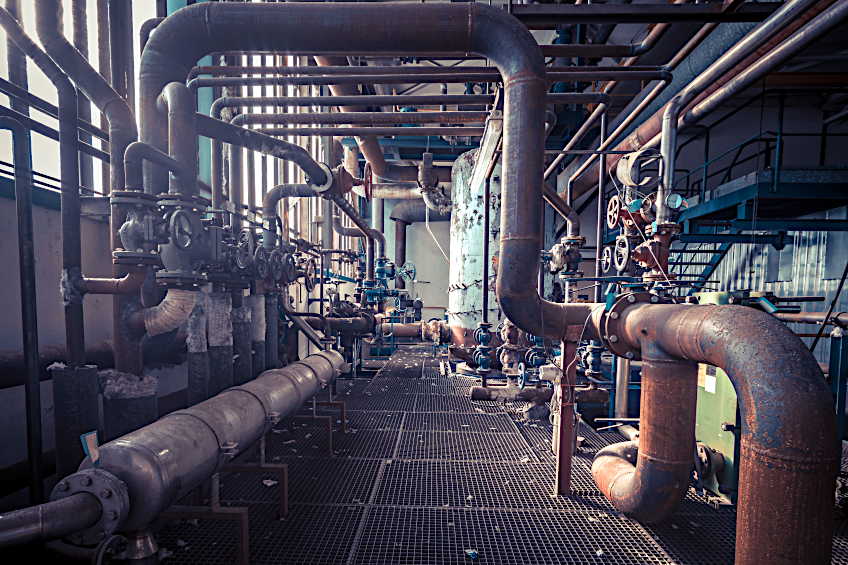
The Industrial Revolution, which began in the 1760s in metropolitan Europe and the United States, signaled the commencement of mass production. With big, grid-paned windows to let in fresh air and plenty of natural sunlight, lofted floors, open spaces, and exposed brick walls, factories were the forerunners of industrial architecture. Many of these features were put in place to keep people safe.
The customary plaster covering brick walls, for example, was a fire risk, leading to the safer, exposed-brick look.
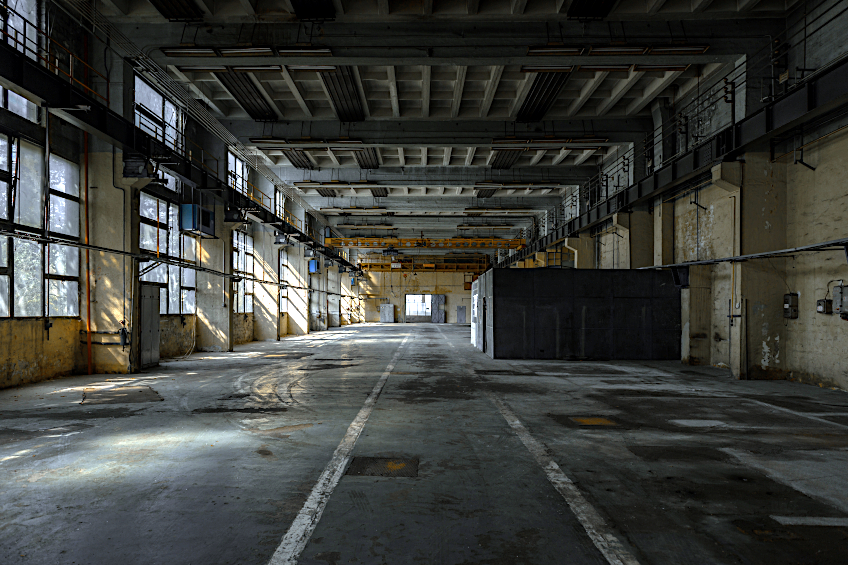
As enterprises combined operations under one roof in the 1870s, a second Industrial Revolution resulted in even larger factories. Better construction materials, including concrete and steel, were necessary for these structures, yet they were still exposed. In 1879, the first Edison light bulbs, a key feature of industrial lighting, were invented. The steampunk movement and style is highly influenced by the literature and scientific innovations of this period.

While historic factories had existed for about 250 years, the industrial style arose in the 2000s, when housing shortages in New York and other cities became a reality. Industrial loft apartments with open plan designs were converted from factories. The exposed structural aspects of the factories, such as huge windows and exposed materials, became selling points.
These buildings became very popular with creatives and artists alike. Artists had long made their studios in parts of buildings with good light, space, and cheap rent, and as empty factories and warehouses became available all over New York, quickly moved in. Andy Warhol famously converted an old warehouse into a live-and-work loft. He also hosted events in these lofts for his exclusive patrons.
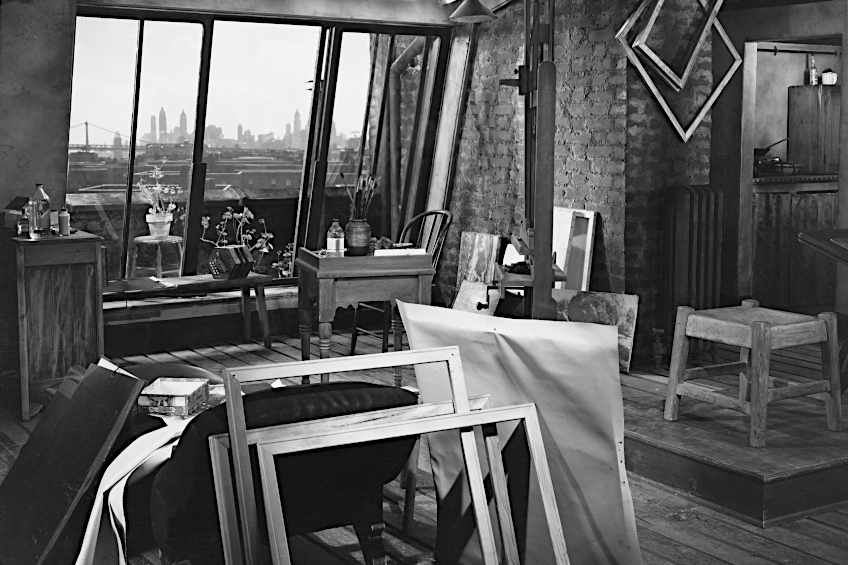
Industrial interior design has recently gained popularity as a result of the advent of minimalism, as the rustic and reused materials complement the crisp, straight lines that characterize modern and minimalist design. It has even made its way out of the city and into vast, suburban homes with open floor plans, big windows, and neutral color palettes.
The neutral palette, faded leather, and use of salvaged wood and other natural elements combine well with hygge, the warmer, minimalist style, in Scandinavian interior design.
Characteristics of Industrial Interior Design
Industrial interior design is probably one of the easiest styles to recreate, as there are plenty of elements that contribute to the style, and even if only a few of these elements are used, the interior can have an overall industrial aesthetic. Below we will look at a few key characteristics in original industrial buildings as well as give a few industrial interior design ideas.

Exposed Pipes and Ducts
Exposed services are probably one of the most notable characteristics of industrial house design. An added spatial benefit of exposing these services is that it gives a space extra height by eliminating the need for a ceiling. Ceiling voids can be as large as 27 inches, and in interior design, this is considered to be a lot of visual and physical height added to an interior. Pipes are not only exposed on the roof slab, but also on the walls. We see this in industrial bathrooms where the tap plumbing is exposed, and a feature has been made of it.
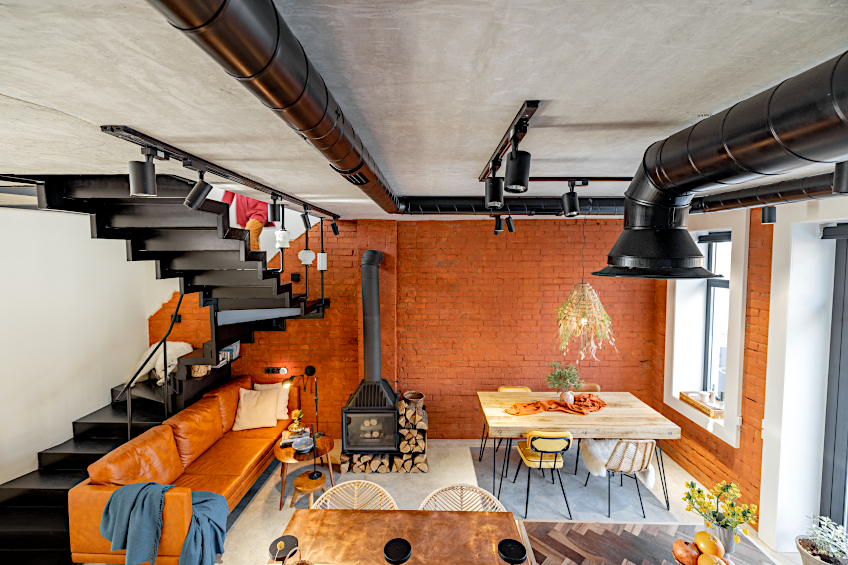
To further emphasize these pipes, it is usually painted a contrasting color to the walls and roof slab. Black pipes against white backgrounds, for example. If you are after an industrial aesthetic, but for some reason cannot have your pipes exposed, a good option is industrial-look furniture and accessories that are widely popular, like lampshades made out of brass pipes. Or shelving where the verticals are made out of steel piping. Painting the ceiling a concrete gray is also a great substitute for the concrete slab look.
Metal Surfaces and Accents
Stainless steel counters give an industrial kitchen vibe, which is a welcome addition to any industrial-themed home. As a rule, designers usually stick to the same metal finishes throughout a space, but with an industrial-style interior, that rule goes out the window. Copper pipes and faucets, black-framed windows, and bronze hardware for your cupboards and lighting pieces are more than okay. This being said, choosing black as your metal color really does make a statement and ties everything together very well.
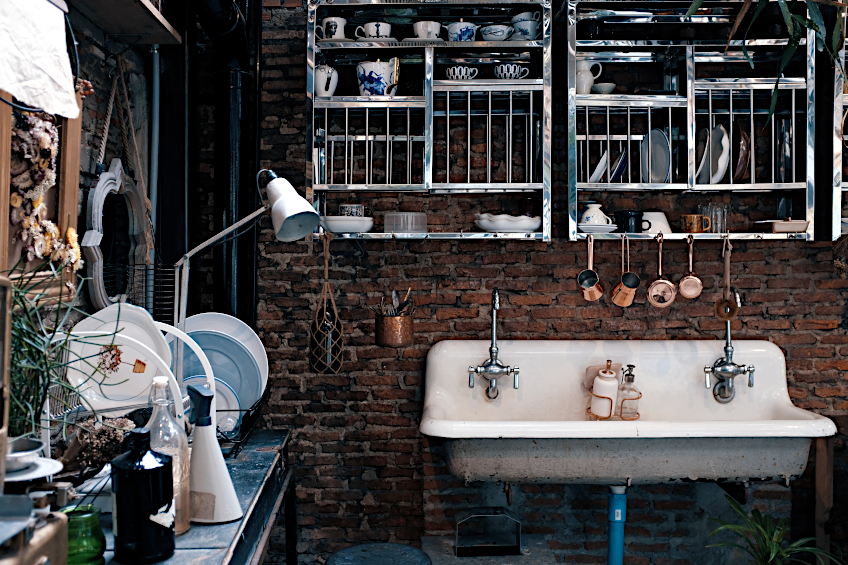
Although metal accents are usually only minimized to hardware and plumbing accessories, with industrial house design you can go full out. Make use of metallic paints or buy statement chrome pieces to fill the interior with.
The Mixture of Modern and Industrial Elements
The overuse of industrial elements can create a very cold and unwelcoming atmosphere. Designers have resolved this problem by combining industrial elements with contrasting modern furniture and décor. There is no set rule as to which there should be more of or less of, it is entirely up to each individual. The addition of modern furniture with its sharp lines and saturated colors works well against the natural appearance of industrial finishes like concrete and wood.
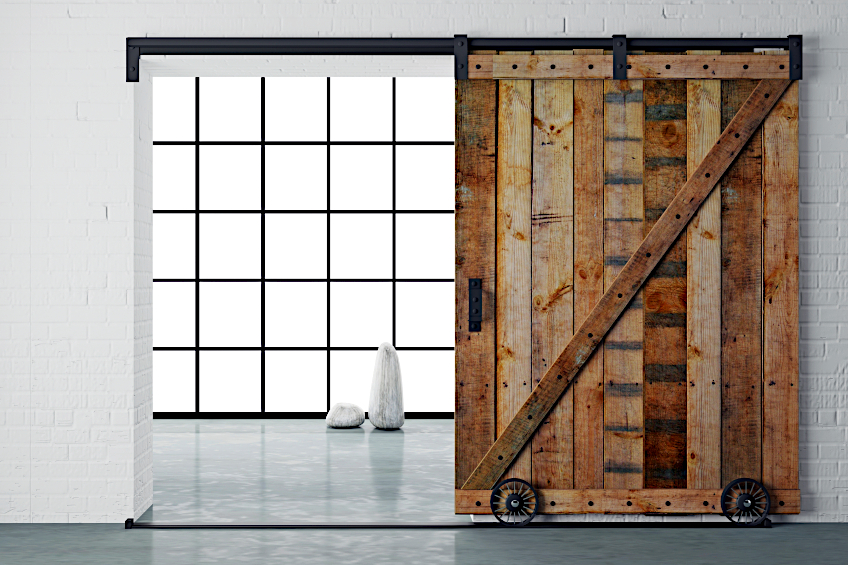
Vintage Accessories and Furniture
Vintage pieces that were used in laboratories or old factories add a lot of character to a space and emphasize an industrial interior. Antique lighting is also a must-have; for example, rusted pendant lights that dangle from the ceiling.
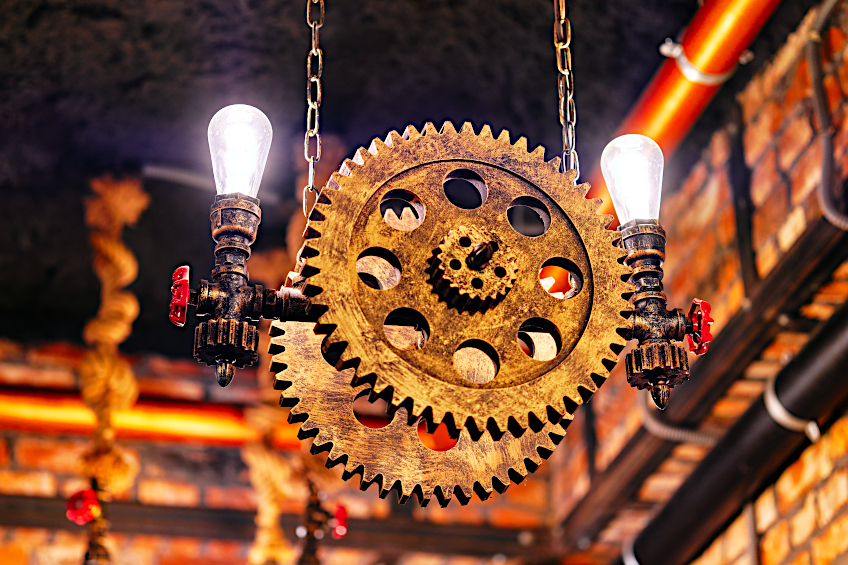
The industrial revolution also inspired periods like steampunk, so in turn, steampunk-themed furniture is such a considerate nod to the history of the design style. Mirrors with gears as frames, intricate metal floor standing lights, and vintage suitcases, are all great industrial décor items. Be careful not to overdo it with steam-punk though, as it can look a bit cluttered.
Exposed Brick Walls
As previously mentioned, plaster was a safety hazard for workers in industrial factories, which is why exposed brick became such a popular design feature. We see this characteristic in a lot of loft apartments, and they give off a very rustic feel which is a stark contrast to the plastered and painted walls in most contemporary homes.
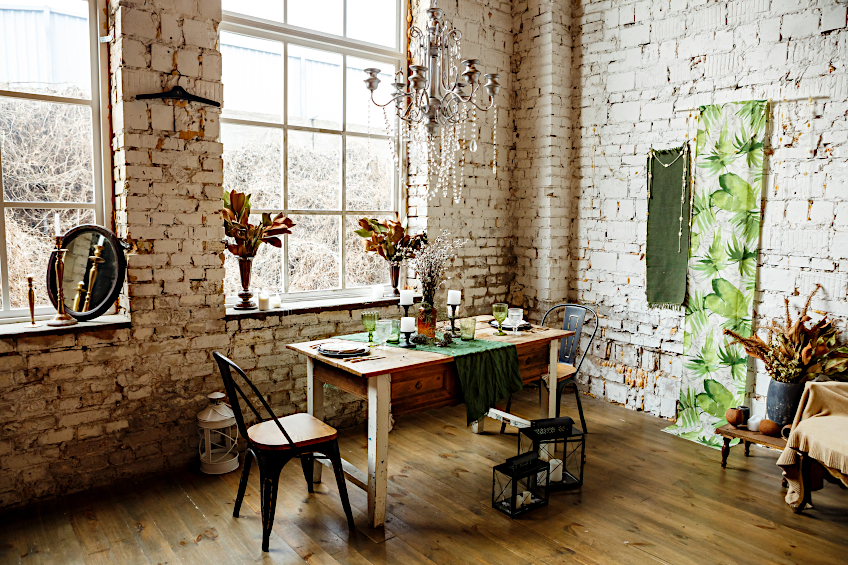
Distressed and peeling plaster that exposes parts of the brick wall behind it is such an interesting feature and can almost be seen as a work of art. Contemporary designers try their best to imitate this industrial aesthetic by only adding plaster to a few sections of a brick wall and painting the plaster to look old and weathered. If you don’t have an exposed brick wall, many realistic brick cladding options will result in the desired effect.
Distressed Wood and Leather
Texture is essential when it comes to furnishing your industrial-styled home. Distressed wood and leather furniture items are seen as industrial-look furniture and further add to the rustic look and feel of industrial interiors. Wood pieces with visible knots and a rough texture are perfect options. The color of your wood pieces also doesn’t have to match perfectly, in fact: the more mismatched they are, the better.
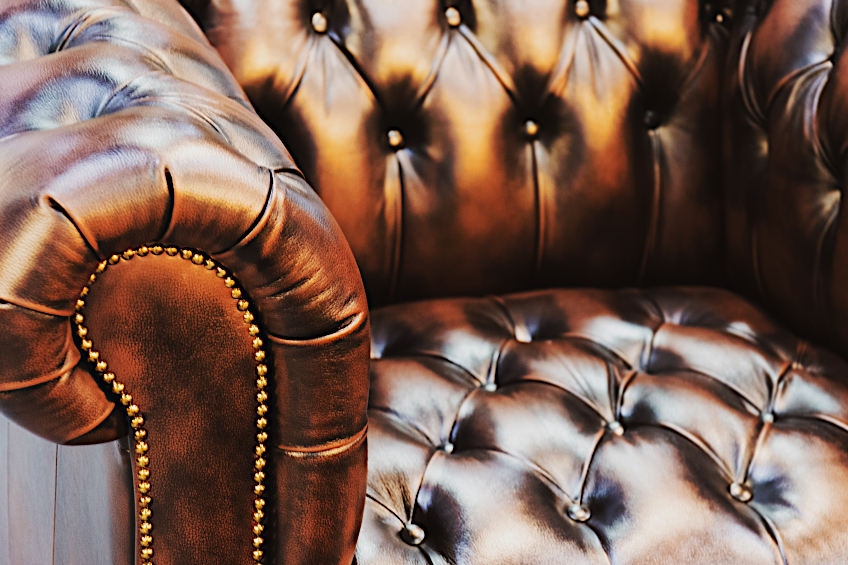
Sectional tan leather sofas are very popular, as they make quite the statement against cold concrete floors and walls and they also contribute towards visually separating the living room from the other living spaces.
Open-Plan Layout
Because industrial design originated from loft apartments, it became popular to create interiors with industrial themes as large open-plan spaces. Sometimes they look more like one big studio apartment than a house. This leads us to another main characteristic of industrial interior design, which is so essential that it can also stand on its own: An open-plan kitchen that has a kitchen island that connects the kitchen and the industrial living room.
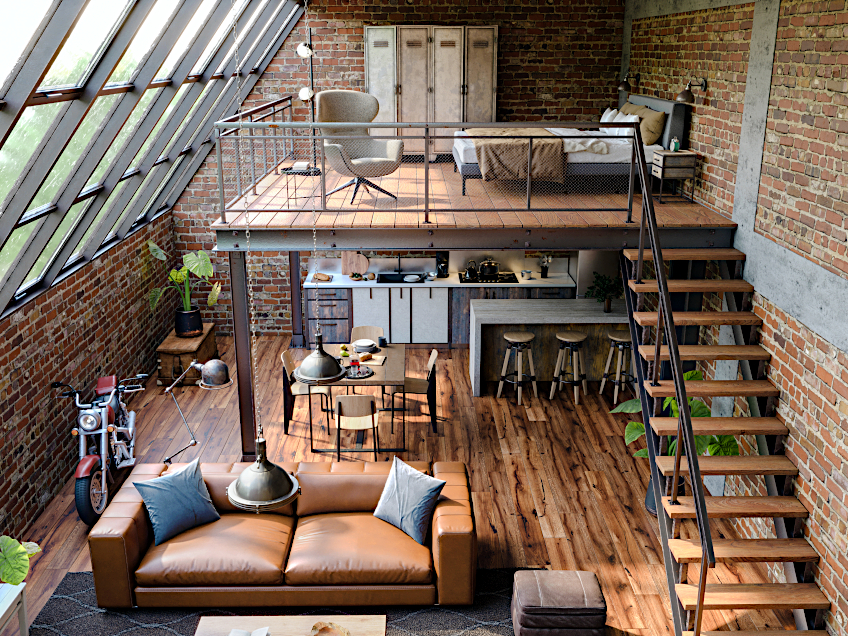
If you want to go the extra mile, having an open sleeping area emphasizes the industrial aesthetic even more, although it is not everyone’s cup of tea. The ideal situation is, of course, to have your sleeping area on a mezzanine level. To visually separate the sleeping area a tiny bit from the rest of the house, the bed is usually placed on a raised podium. Other ways that visual separation is created in these large open-plan loft apartments are bookshelves, the use of area rugs, and other movable furniture partitions.
Concrete
Concrete is the epitome of the beauty of raw materials. Precast concrete panels with the shutter prints from their molds still on there are such great examples of how a material can be beautiful in its most raw form. Concrete wall panels, polished concrete flooring, and concrete countertops are all elements that elevate industrial interiors.
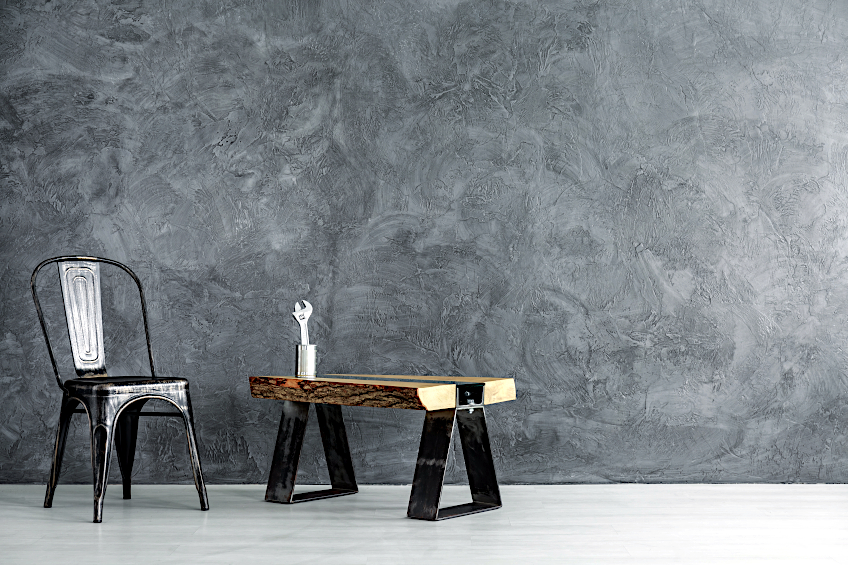
Cast concrete panels are quite an expensive solution to industrial interior design. A similar effect can be achieved through various paint effects. On the other hand, finishing your floor with polished concrete can end up being much more budget-friendly than large format tiles or hardwood flooring.
Neutral Color Palette
When choosing colors for your industrial interior design colors, stick to saturated neutrals like stark white, caramel, black, and gray. Avoid middle-toned neutrals such as creams. Gray walls and floors as a backdrop, with tan furniture, white soft furnishings, and black accessories are a great combo. Accent colors are usually used very sparingly in industrial interiors. Vivid colors that can be picked up in the brick walls and orange leathers are great options if you are set on making use of color.
| Shade | Hex Code | CMYK Color Code (%) | RGB Color Code | Color |
| White | #FFFFFF | 0, 0, 0, 0 | 255, 255, 255 | |
| Black | #000000 | 0, 0, 0, 100 | 0, 0, 0 | |
| Dark Concrete Gray | #848484 | 0, 0, 0, 48 | 132, 132, 132 | |
| Light Concrete Gray | #B3B3B3 | 0, 0, 0, 30 | 179, 179, 179 | |
| Tan | #97572B | 0, 42, 72, 41 | 151, 87, 43 | |
| Brown | #683C1E | 0, 42, 71, 59 | 104, 60, 30 |
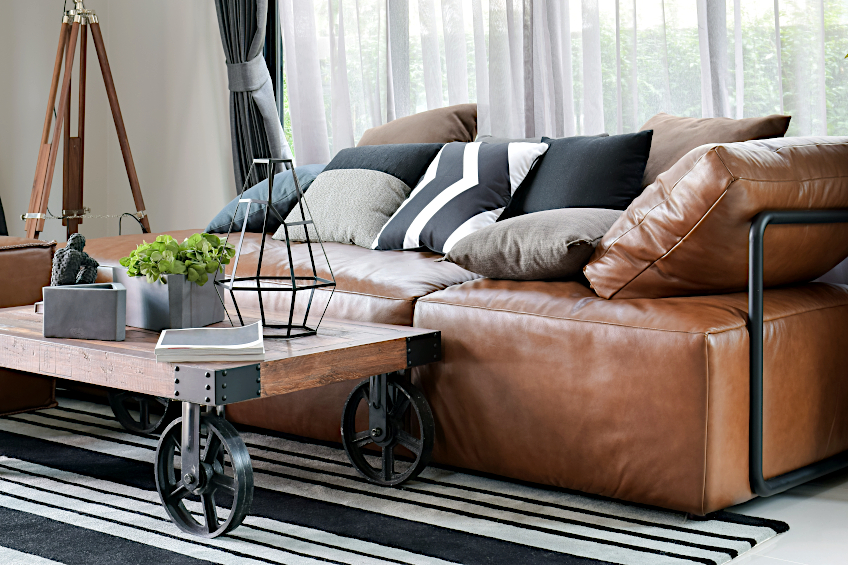
Industrial-style Lighting
The most commonly used light feature in industrial-style interiors has to be exposed bulb lighting. These are inexpensive, easy to come by, and look amazing! There are so many different shapes and tones of lightbulbs, so don’t be fooled into thinking that this lighting choice is restricting at all. Aside from the actual bulb, the cable itself is also seen as an industrial décor element in interiors. Some cables are threaded with thick rope, which is a great textural element.

Another favorite industrial style lighting option is the standard factory light. These can come in gigantic sizes, which not only makes them stylistically ideal, but functionally as well, because they are perfectly scaled for large open spaces.
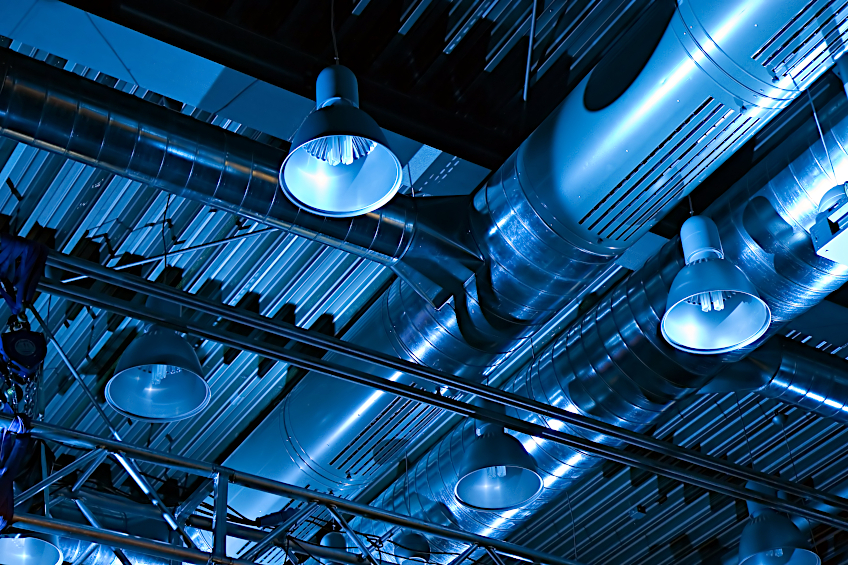
Mismatched Furniture and Décor
This is something that isn’t usually listed as a characteristic, yet it is very evident in examples of industrial interior design. Mismatched steel dining room chairs, pendant lights that differ in shape and size, and different bedside tables, all of these add to the quirk that is industrial interior design. If you feel like mismatched items are a bit too much for your brain to comprehend or make sense of, try to use the same item in different colors, and vice versa.
For example, mismatched chairs that are all the same stark white have a very eclectic effect.

Grid Framed Windows
Large, grid-framed windows were very popular in factories during the industrial revolution, as people worked long hours in these factories, and natural light was essential to the well-being of these workers. Later, when these factories were converted into loft apartments, the large windows with stunning views became a large selling point. Large vast open spaces are emphasized even more through the use of grid-framed windows, especially with black frames.
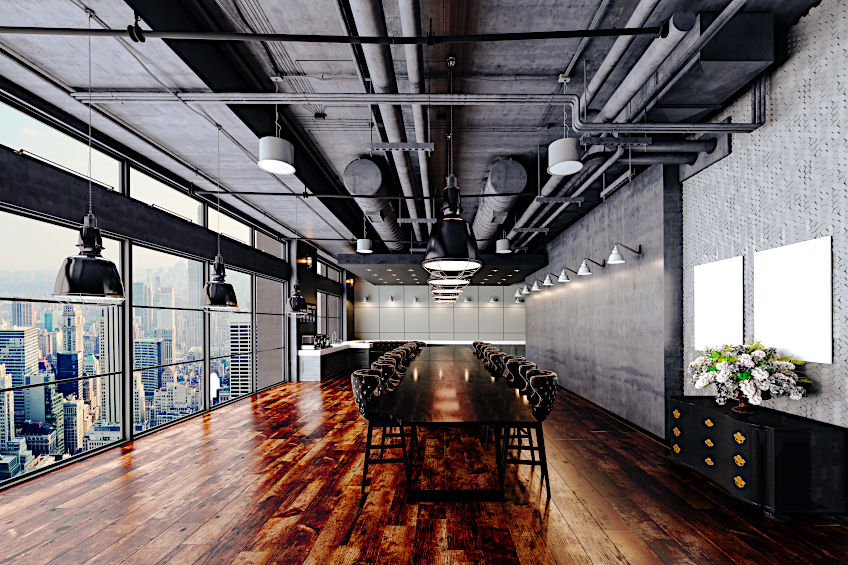
Even if large floor-to-ceiling windows aren’t a possibility, painting the window frames black should already add to the desired effect. Dress your windows with very light sheer fabrics that match the color of your walls.
Minimal Décor
Industrial décor is usually very minimal to allow for the materials and the furniture in the space to speak for themselves. Industrial interior design celebrates negative space and never clutters it with unnecessary objects. Clutter distracts from the quality and characteristics of raw materials such as concrete and wood. This might be in contrast to the laid-back effect that industrial interior design is said to be. Still, it is important to note the period in which the design style was born: it was during an era where terms like “less is more” and “form follows function” were born and made use of regularly.
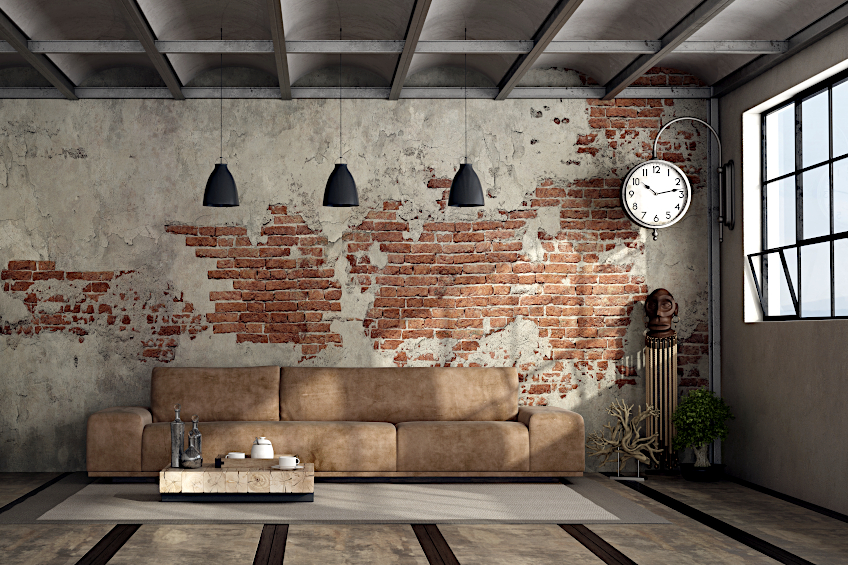
Large Wall Clocks
Browsing industrial interior designs, you will notice that a lot of these interiors have overly large wall clocks, usually in the industrial living room areas. The inspiration for these clocks is most likely clock towers. Although not as popular as factories, some clock towers were also converted into loft apartments during the housing shortage post-industrial revolution.
Therefore, overly large wall clocks are still very much part of the industrial interior design aesthetic. Very minimalist large clocks behind which you can see the exposed brick or concrete wall are also all the rage right now.
Industrial Interior Design Ideas
To summarize, below is a list of practical industrial interior design ideas. Even by incorporating just a few of these ideas, you will achieve a coherent industrial interior design space that imitates a New York loft in the best way possible.
- Paint your walls concrete gray.
- Paint your window and door frames black.
- Leave windows undressed where possible.
- Combine metal and wood furniture.
- Incorporate a feature wall of exposed brick.
- Display everyday items by making use of open shelving.
- Paint exposed pipes a contrasting color to the ceiling and walls.
- Make use of saturated neutral colors.
- Incorporate a lot of Edison light bulbs and rustic pendants.
- Don’t be afraid to make use of mismatched chairs and lights.
- Make use of plants as industrial décor.
- Use furniture pieces to visually separate rooms.
- Incorporate a large wall clock in your industrial living room.
- Mix modern furniture with vintage furniture.
- Use area rugs to visually separate rooms.
- Incorporate metal throughout the interior.
With its no-frills, laid-back sustainable design ethos, industrial interior design is a style that is such a breath of fresh air. Whether you stick to the original design principles or make it your own, your home is bound to look uniquely beautiful when you use this design style as your inspiration.
Frequently Asked Questions
What Is the Difference Between Industrial and Modern Design?
Interesting architectural details, mixed-material elevations, and open floor plans are all hallmarks of modern architecture. Bare interiors, metal or concrete surfaces, and high-beamed ceilings are all elements of industrial design.
What Is Modern Industrial Interior Design?
Industrial interior design is a trend that was sparked by the conversion of old factories and industrial spaces into urban dwelling spaces, sometimes out of necessity. Rustic architecture, aged surfaces, raw materials, exposed bricks, and other aspects are all part of the style. Injecting this style into modern homes that aren’t old factories makes it modern industrial interior design.
What Distinguishes an Industrial-Style Interior?
The architectural components within a place define industrial interiors. Other styles hide piping and ducting, while industrial embraces them and makes them the center of attention. The raw, almost unfinished nature of industrial interior design creates a relaxed living environment.
Can You Mix Industrial With Traditional?
Not only can you mix industrial style with traditional elements, but it is also preferred. The contrast between the two styles makes the industrial elements even more evident. Sticking to only industrial elements and textures can do you a disservice.
What Are the Elements of Industrial Design?
Exposed elements such as ducts and pipes, and raw materials such as concrete floors are key industrial design elements. The combination of wood and metal surfaces and furniture pieces tend to feature a lot as well as exposed brick walls. In terms of color, earth tones and natural tones are usually incorporated. Vintage furniture and decor pieces are great finishing touches to industrial interiors.
How Do You Soften an Industrial Interior?
Feeling overwhelmed by your concrete floors and exposed brick walls? As popular as the style may be, no one wants to feel like they are living in a warehouse. Luckily, these interiors can easily be softened by making use of Scandinavian design characteristics. The addition of soft furnishings and décor like rugs, blankets, and cushions is a must, as this will instantly warm up the space. Candles and décor with warm tones will also visually do the trick.
Is Industrial Design Going Out of Style?
It is difficult to predict future design trends, but we are certain that industrial interior design is here to stay. Especially considering how designers are forced to be more sustainably responsible when it comes to the construction of new buildings. Industrial interior design is a great excuse, so to say, for reusing, minimizing, and sustainably designing interiors.
What Is Industrial-Look Furniture?
Industrial-look furniture shares characteristics with old factories and industrial spaces. Rustic leather, wood, and steel furniture with exposed hardware are great examples to use as industrial furniture pieces.

